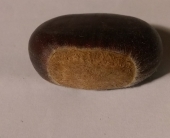Problem #1: What I'd love to do is find an efficient way to separate the juice from the pulp. I've put it in a fine mesh strainer and been able to get much of the juice and pulp separated but it's time consuming. The advantage is that the pulp can go sauce and the juice can go into tomato soup. Less boiling to get the pulp thick enough. Any ideas for a way to separate them efficiently?
My tomato canning task has evolved into a few simple tasks:
1. Process them through a Squeezo ( looks like the photo in the initial post) that separates pulp/juice from skin and seeds,
2. Run the latter through again to extract the last bit of good stuff,
3. While bringing a large pot of the juice/pulp to a boil, add chopped basil, garlic and oregano and let boil for 10 minutes, then cool for twenty minutes, or so: boiling bubbles force too much pulp into the soup stock but if you want some in, do wile boiling,
4. Insert a colander or other vessel with lots of small holes in the pot and ladle out the clear liquid that flows into the vessel,
5. Fill quart jars with this "soup stock",
6. When the vessel no longer sinks into the thick sauce, remove it and ladle the sauce into their own jars,
7. Use a steam canner to process all of the above (I process seven or eight jars at a time throughout the above steps).
I illustrated most steps in:
https://sunsavingfossils.blogspot.com/2017/09/processing-tomatoes.html











